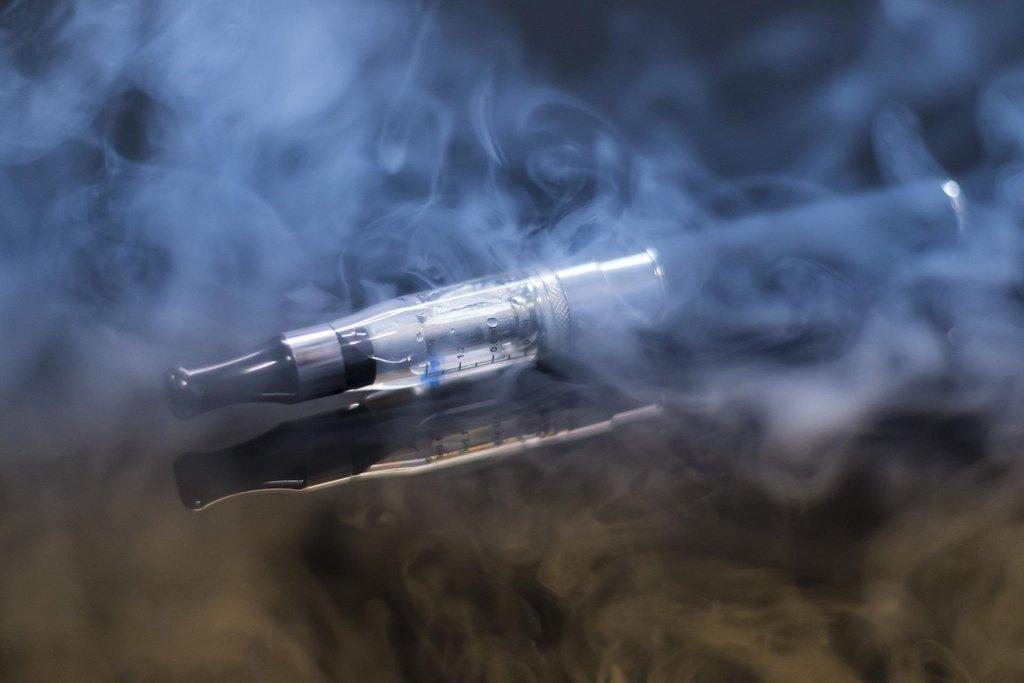USU Extension hosted an Escape the Vape webinar for local parents within the community to gain information on the current issue of teens becoming increasingly dependent on e-cigarettes.
This webinar was led by Jordyn Oman, USU Extension’s Health and Wellness Coordinator for Carbon and Emery Counties. She stated that the information in the webinar was given based on current research and announced that the use of e-cigarettes in considered an epidemic.
The use of e-cigarettes in high school students increased by 78% in just one year and the e-cigarettes are often disguised as something as commonplace as markers or USB drives. There are many names for e-cigarettes, such as a vape, mod pen or Juul.
By the end of 2018, Juul had 76% of the e-cigarette market and it remains the most popular brand in the United States. In December of 2019, the Food and Drug Administration (FDA) raised the age restriction of 18 to buy tobacco products. Now, an individual must be 21 or older to purchase the products. Despite this restriction, high school students are still finding ways to partake.
Studies find that the youth are still getting vape products from friends, peers and others. Currently, the FDA have very minimal regulations on e-cigarettes. A graph showed staggering results for junior high and high school students, stating that the use by high school students increased by over one million between 2017 and 2018.
Oman said that many shocking ingredients are found in vape pens and e-cigarettes, most of which the community may not be aware of. Along with nicotine, they contain formaldehyde, which is used in the preservation of deceased bodies and is a carcinogen. There is also acetaldehyde, found in disinfectants, drugs and perfumes, as well as propylene glycol, found in antifreeze and toluene, components found in nail polish and glue, and many other harmful substances.
In 2019, it was found that 70.9% of students in Utah stated that the first product that they used was an e-cigarette. Those that use them now are more likely to engage in traditional cigarette use later in life, Oman explained. Staggeringly, one whole Juul per day equals one pack of combustible cigarettes.
Furthermore, e-cigarette use has a faster transfer of nicotine into the body than traditional cigarettes and increases the chance of lung illness such as asthma, bronchitis, COPD and popcorn lung. These illnesses are often classified as an EVALI, which is an e-cigarette or vaping use associated lung injury.
Daily vapor users are also 1.7 times more likely to have a heart attack and the chemicals within can cause sores, rashes, nausea, dry mouth and much more. It was also explained that vaping can have social effects, such as feeling withdrawn, a loss of freedom, poor academia and poor athletic performance. Overall, it reportedly contributes to a sense of disengagement.
“It’s important to take care of our lungs and heart, and one way is not vaping,” Oman stated. In the wake of the COVID-19 pandemic, it was also discovered that e-cigarette users are five times more likely to contract the virus while dual users (those that use both e-cigarettes and combustible cigarettes) are seven times more likely.
Oman discussed many ways that parents can be engaged with their children and teens. It was found that children and teenagers that feel more involved with their families and included in activities are much less likely to begin the use of a vape pen or e-cigarette. These activities could be cooking together, movie nights, game nights and the like.
It was said that prosocial involvement and students feeling included also significantly helps. Oman concluded the presentation with suggestions on how to approach the topic up with a teen or student. These steps are to be prepared, calmly bring up the topic, be sure to let them ask questions, be honest and direct with the answers, and keep an open environment.
The evening ended with a question and answer portion as well as a follow-up survey that participants could take. It was also announced that there is another opportunity available for those that missed the seminar. Another webinar is slated for Tuesday, March 30 at 6:30 p.m. Information on registering can be found here.


